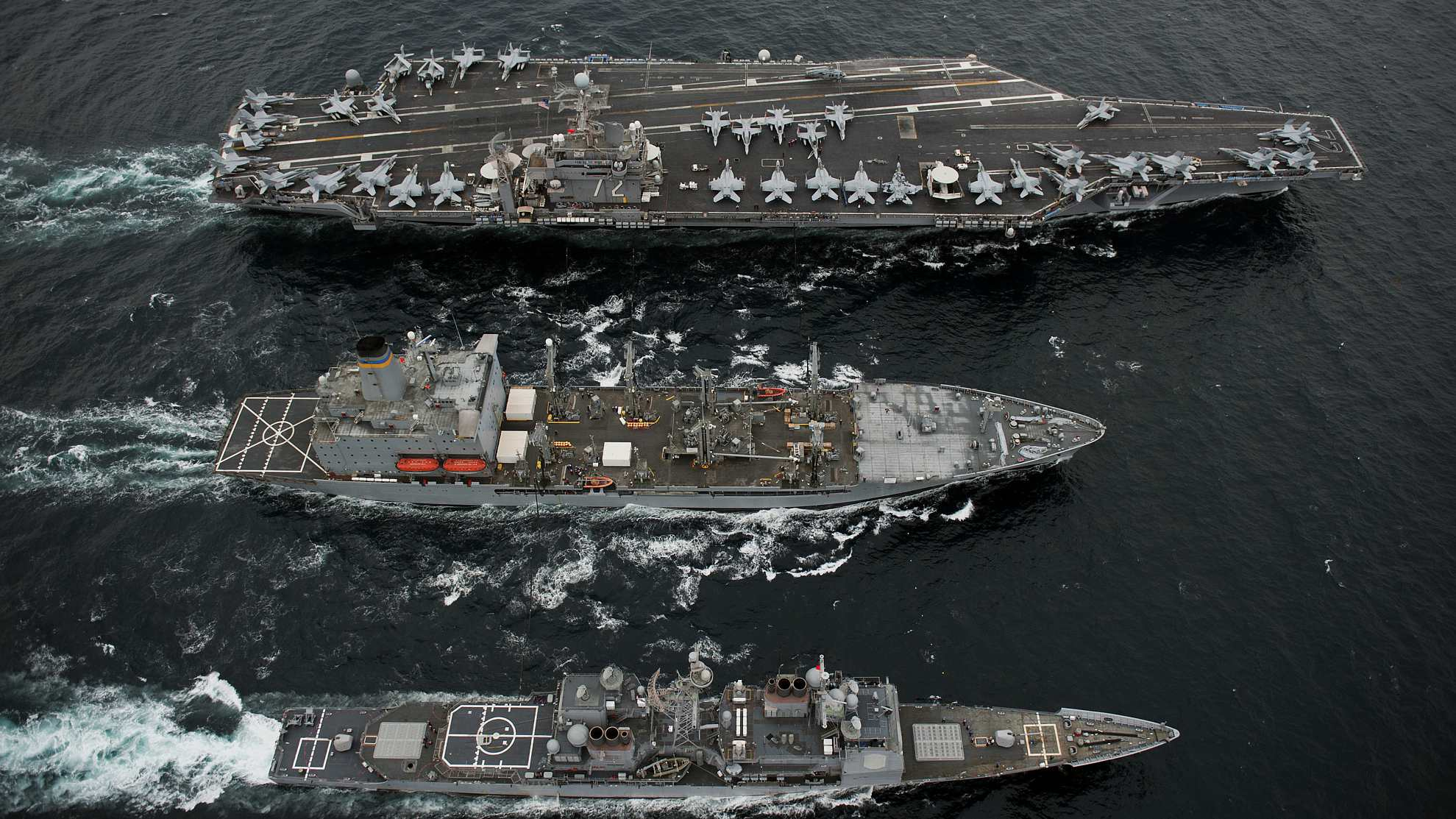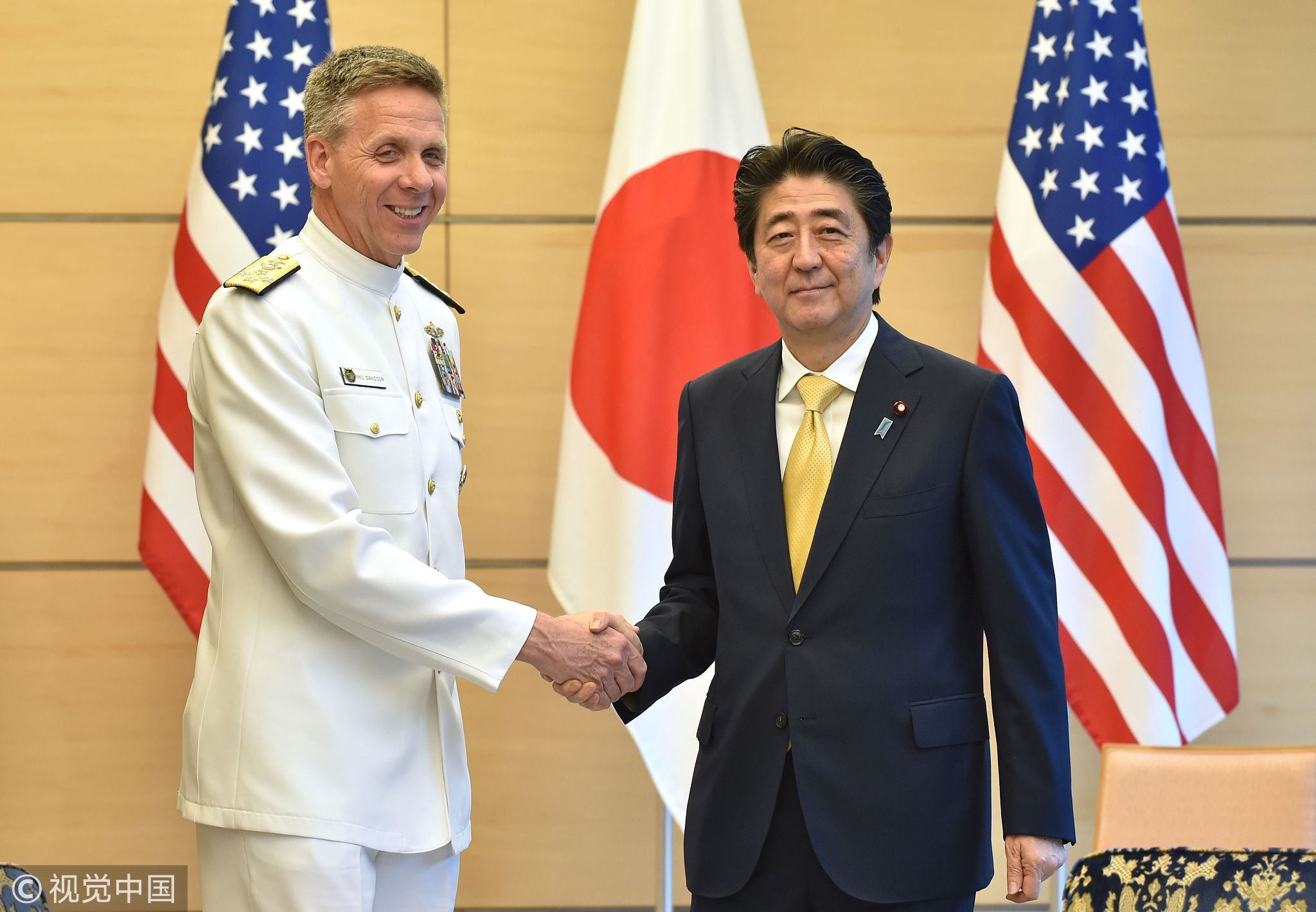
Opinions
11:58, 20-Aug-2018
Opinion: US Indo-Pacific strategy: a mixture of “hedging” and “wedging”
Updated
11:55, 23-Aug-2018
Wang Peng

Editor's note: Wang Peng is an associate research fellow at the Chongyang Institute for Financial Studies of Renmin University of China. The article is translated and edited from a report on US Indo-Pacific Strategy. The article reflects the author's opinion, and not necessarily the views of CGTN.
From the second half of 2017 until he demitted office, the term “Indo-Pacific” was used repeatedly by US Secretary of State Rex Tillerson, representing the first appearances of the term in the official rhetoric of the Trump administration.
In November 2017, President Donald Trump further elaborated on the concept in his speech at the APEC summit.
Since then, with the release of the “National Security Strategy,” the “National Defense Strategy,” and the “Nuclear Posture Review” of the US, “Indo-Pacific” has been elevated in significance from official rhetoric to national strategy and the relevant policies concerning national security and national defense security, in particular, have been put in place.
After the US Pacific Command was renamed the US Indo-Pacific Command on May 30, 2018, it was widely believed in the international community that the Trump administration would continue implementing the Indo-Pacific strategy as one of its signature strategies.
At the renaming ceremony, US Defense Secretary James Mattis publicly stated that this move was largely in response to China’s strategic challenges because “the Indo-Pacific has many belts and many roads.”

Secretary of State Mike Pompeo speaks during the Indo-Pacific Business Forum at the US Chamber of Commerce on July 30, 2018, in Washington./ VCG Photo.
Secretary of State Mike Pompeo speaks during the Indo-Pacific Business Forum at the US Chamber of Commerce on July 30, 2018, in Washington./ VCG Photo.
Indo-Pacific strategy: a mixture of “hedging” and “wedging”
“Hedging” means “double-sided betting” in general.
To be specific, economically, the US maintains trade with China while suppressing Chinese imports by means of trade disputes to narrow the trade deficit, and impeding China’s scientific and technological progress and industrial upgrading by using a technology embargo.
In terms of security, the US maintains engagement and negotiation with China to avoid a direct war between the major nuclear powers, while co-opting countries such as Japan, India, and Australia to strengthen its alliances so as to check and undermine China.
“Wedging” means sowing discord.
Trump’s “America First” policy dictates that the US should shy away from some of its international obligations, and limited US national strength makes it impossible for the US to concentrate on the Asia-Pacific region.
Under these circumstances, by fueling the existing conflicts or invoking new ones between China and other major Indo-Pacific countries, the US expects to see other countries confront China on its behalf so that its strategic pressure and economic burden can be reduced.
By so doing, the influence and leadership of the US in the Indo-Pacific will be strengthened as those countries will depend on the US even more for security and political assistance.
They may buy more (weapons) from the US, which will help boost the US economy and create jobs and improve the relations between the Trump administration and interest groups. Ultimately, the US will achieve dual purposes: maintaining US hegemony internationally at a lower cost while consolidating Trump’s power domestically.
Inherent contradictions and weaknesses of the Indo-Pacific strategy
The Indo-Pacific strategy may pose a certain threat to China, but, as a compromised solution of the Trump administration in the face of a series of dilemmas at home and abroad, this strategy also has some inherent contradictions and weaknesses.
1. Strategic contraction vs hegemonic maintenance
If Trump really wants to “Make America Great Again” and sticks to the principle of “America First,” the US needs to “hide its capacities and bide its time” as to what China has been doing over the past decades, so as to achieve global strategic contraction and thereby concentrate resources on its domestic development and renew its core competitiveness.

China-US relations./ VCG Photo
China-US relations./ VCG Photo
However, the rising global threats and challenges have made it impossible for the US to achieve strategic contraction. In addition, influenced by domestic (military) interest groups and other factors, the Trump administration has further increased military spending and increased efforts to maintain its global hegemony.
2. Comprehensive containment vs continued engagement
The rapid rise of China has led to a narrowing of the gap between China and the US. At the same time, a better understanding of China’s political model, development path, and projected international influence has made the US feel more determined to contain China.
However, due to China’s overall national and economic strength, the huge risks of direct military conflict between the two nuclear powers, and the close security and trade ties between them, it is impossible for the US to launch preventive military strikes against China or adopt the kind of “containment” policy it did to the Soviet Union during the Cold War.
The US has no choice but to keep checking and impeding China, and, in the meantime, maintain engagement and cooperation with it in security and trade.
3. Comprehensively suppressing China vs making enemies everywhere
To counter the perceived challenge from China, the Obama administration, with limited overall national strength, chose to reduce the presence of the US in the Middle East so as to concentrate on achieving its “Rebalance to the Asia-Pacific” strategy.

Admiral Philip S. Davidson (L), Commander of US Indo-Pacific Command, shakes hands with Japan's Prime Minister Shinzo Abe at Abe's office in Tokyo on June 21, 2018./ VCG Photo.
Admiral Philip S. Davidson (L), Commander of US Indo-Pacific Command, shakes hands with Japan's Prime Minister Shinzo Abe at Abe's office in Tokyo on June 21, 2018./ VCG Photo.
However, considering national interests and influenced by domestic lobby groups, Trump vigorously strengthened the alliance between the US and Israel and aligned their common strategic goals since he took office. He pulled out of the Iran nuclear deal and angered Arab allies by moving the US embassy in Israel to Jerusalem.
In Syria, Russia has an advantage now. In the wider Middle East region, Iran, Iraq and Syria have shown a tendency to build a “Shia Crescent.” These factors work together to “anchor” American power in the Middle East.
At the same time, the failure to reconcile with Russia has led to an aggravated confrontation between the two countries, leaving the US unable to make a strategic withdrawal from Eastern Europe. Therefore, the US urgently needs to turn to its allies for help to ease its strategic pressure in containing China.
4. Aid allies vs benefit itself at every opportunity
During the Cold War, the US and the USSR competed to support their allies to fight “proxy wars”. In the Obama era, the US attempted to reach the Trans-Pacific Partnership (TPP) Agreement and other regional cooperative initiatives to exclude China by yielding part of its profits to these signatories.
That required the US to provide benefits to its allies in exchange for their strategic support, which runs counter to Trump’s “America First” principle that attempts to re-establish “fairer” and more “reciprocal” agreements with all trade partners.
Faced with the dilemma of wanting to remain leader of an alliance without providing any benefit, the US can only rely on the “wedging” strategy to sow discord between China and other (Indo-Pacific) countries or to worsen the relations between them. The US tries to make these countries feel a strategic need of their own to contain China, so that they may confront China on behalf of the US.
This will help reduce the strategic burden of the US, increase other (Indo-Pacific) countries’ dependence on the US for security and economic support and ultimately strengthen the leadership of the US in the Indo-Pacific region.

SITEMAP
Copyright © 2018 CGTN. Beijing ICP prepared NO.16065310-3
Copyright © 2018 CGTN. Beijing ICP prepared NO.16065310-3